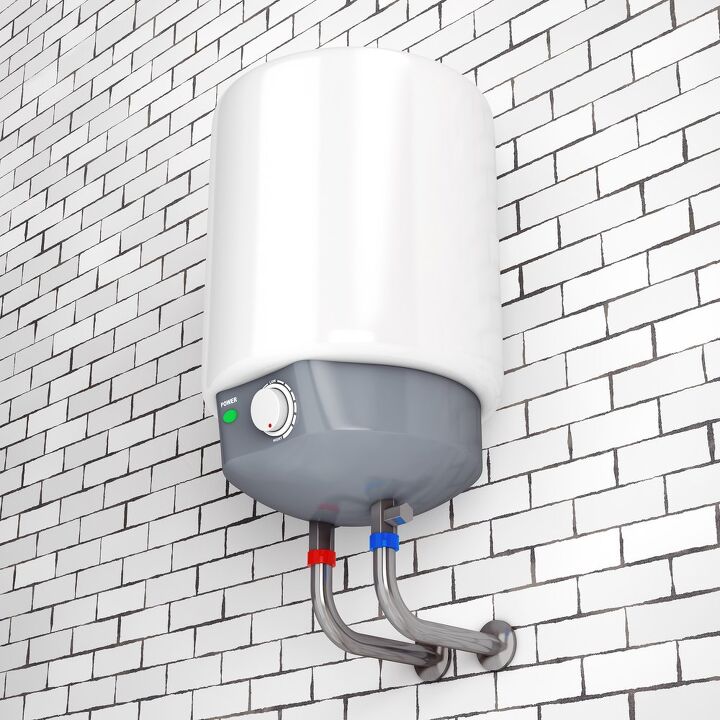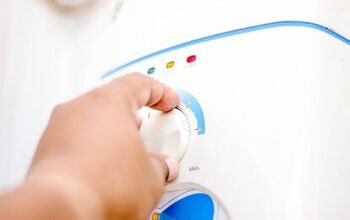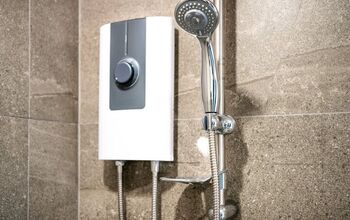EcoSmart Tankless Water Heater Not Heating? (Fix It Now!)

Tankless water heaters are becoming more common and for good reason. They are very efficient and can save you money in the long-term by only heating up water when it is needed. Compared to traditional water heaters that keep a tankful of water, the difference can be stark.
Unfortunately, even for top brands like EcoSmart, your tankless water heater may fail to do its job. The good news is that there are a few issues that are fairly easy to identify. It could be mineral buildup, a system overload, an exhaust blockage, or a plethora of other issues. Some are easily remedied, while others require professional intervention.
Do You Need Water Heater Repair Services?
Get free, zero-commitment quotes from pro contractors near you.

Why is My EcoSmart Tankless Water Heater Not Working?
Just like any other kind of appliance, there is a chance that your EcoSmart tankless water heater may not be living up to its namesake. Tankless water heaters tend to run into these issues far less commonly than water heaters with a tank.
Still, there are more than a few common issues can arise. Here are some of the most common reasons why your tankless water heater may not be doing its job properly.
Mineral Buildup
No matter what type of water heater that you use, you can’t change one simple fact. The water that flows into your home has sediment in it and that sediment can cause issues. The level of sediment depends on the area in which you live, but there are always tiny minerals in your water.
Over time, mineral buildup can occur inside of your water heater. Also known as hard water, that build-up of minerals can essentially clog up the path of the water. The water in a tankless heater travels through a narrow path to get to the heat exchanger.
Mineral buildup can clog that path, making it difficult for the water heater to do its job if it can at all. You can get a flush system descaler kit that will get your system clean and free of mineral buildup once again if this is the problem.
Cold Water Sandwich
This is most common in households where back-to-back showers are frequent. It is known as the “cold water sandwich.” It is where the second member of the household to shower jumps in, gets an initial blast of hot water, followed up with cold water.
This is due to trapped water. Depending on how far the water has to travel to get from the heater to its destination, the more noticeable the gap is between that last heating of water and the next one. The good news is that this typically resolves itself in short order, with your water getting hot again sooner rather than later.
System Overload
Though tankless water heaters are more efficient and can heat water instantaneously, they are not perfect. Just like tank water heaters, they can become overloaded by too heavy a capacity. When that happens, it can struggle to supply the water necessary to meet those applications.
A system overload typically happens when multiple water-using features are going at once. You might want to avoid taking a shower when the washing machine and dishwasher are running, for instance. Ideally, you would keep everything to a single task function but that isn’t always necessarily possible.
Just be aware that the more appliances you are using at one time, the harder the water heater has to work. Not only can that lead to less hot water in the interim, but it can lead to increased wear and tear over time. Save your water heater the trouble and space those tasks out.
Ignition Failure
From time to time, your tankless water heater may fail to ignite at all. For the most part, this comes down to a gas supply issue. If you run on a propane tank, for instance, make sure that you check to see that you have a full tank.
You can also check to ensure that both your gas and water valves are fully opened. If they are even partially open, it can create enough of a blockage that your ignition can fail. Should those not solve the issue, then you have a bigger problem at hand. That means the intervention of a professional technician.
Exhaust or Air Supply is Blocked
Depending on what type of tankless water heater you have, your unit may come with a display. For the most part, those displays will tell you what the issue is. So, you may get an error code from time to time indicating that the exhaust or air supply is blocked.
What does this mean? It means that your water heater is having an issue with either venting or combustion air. Start by checking the vent pipes to ensure that they are connected and that there are no puncture holes.
You may also have to refer to your owner’s manual to ensure that any clearance requirements are being met. It is also common for things like rodents, bird nests, and other obstructions to appear in the venting, so make sure that it is free and clear.
Flame Failure
This is generally an electrical or gas pressure problem. You can follow the same tips as ignition failure by ensuring all the requisite valves are fully open and not causing an obstruction. Otherwise, you may be dealing with regulator failure, an undersized gas line, venting, or something entirely.
For flame failure, you will likely need the assistance of a professional. Even if you have water heater experience, this is a complicated issue that requires proper troubleshooting.
Do You Need Water Heater Repair Services?
Get free, zero-commitment quotes from pro contractors near you.

Other Potential Issues with Your EcoSmart Tankless Water Heater
Perhaps your water heater is managing to get hot, but you are facing a few other issues. This guide will help you not only determine the cause but come up with a quick resolution. In the event of a larger problem, it is always better to defer to a professional. They are able to more effectively troubleshoot the issue and bring about a resolution.
Water Gets Too Hot
What happens when your water heater not only gets hot, but too hot? There are a few likely solutions. Overloading the system, for instance, could have an inverse impact. If your water heater is too hot or not heating at all, it could come down to there being too many appliances in use at once.
You may also have a thermostat that needs to be reset. If you are certain that the system is not overloaded, try resetting the thermostat to somewhere around 120 F. You can also try repositioning the temperature sensor so that it makes more accurate temperature readings.
Water Smells or Look Different
With tankless water heaters especially, the water should always look clear and clean. When it starts to take on a different hue or smell, then you are facing other issues. Different looks or smells could be due to fungus, mold, or some other type of bacteria growing inside of the water heater.
This growth is largely due to the aforementioned minerals that come in our water. When that mineral buildup gets to be substantial enough, it can prevent your water heater from working. But a substantial buildup can also lead to the water taking on a brown, yellow, cloudy appearance.
Should you notice a difference in the color or smell of the water, you will need to flush the system. You can use the aforementioned descaler or you can even use a distilled white vinegar solution. The goal is to clear out that mineral buildup and see if your water heater goes back to normal.

Ryan Womeldorf has more than a decade of experience writing. He loves to blog about construction, plumbing, and other home topics. Ryan also loves hockey and a lifelong Buffalo sports fan.
More by Ryan Womeldorf



























